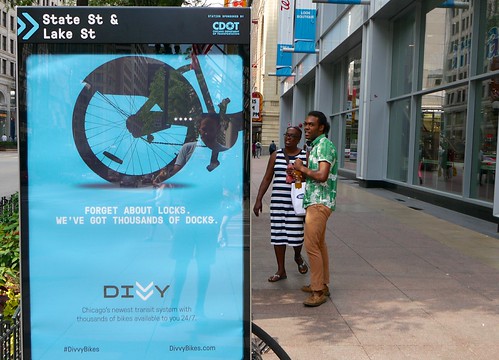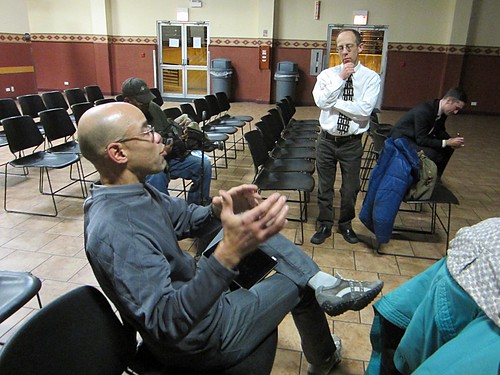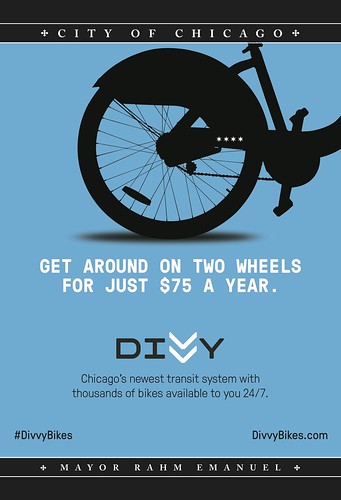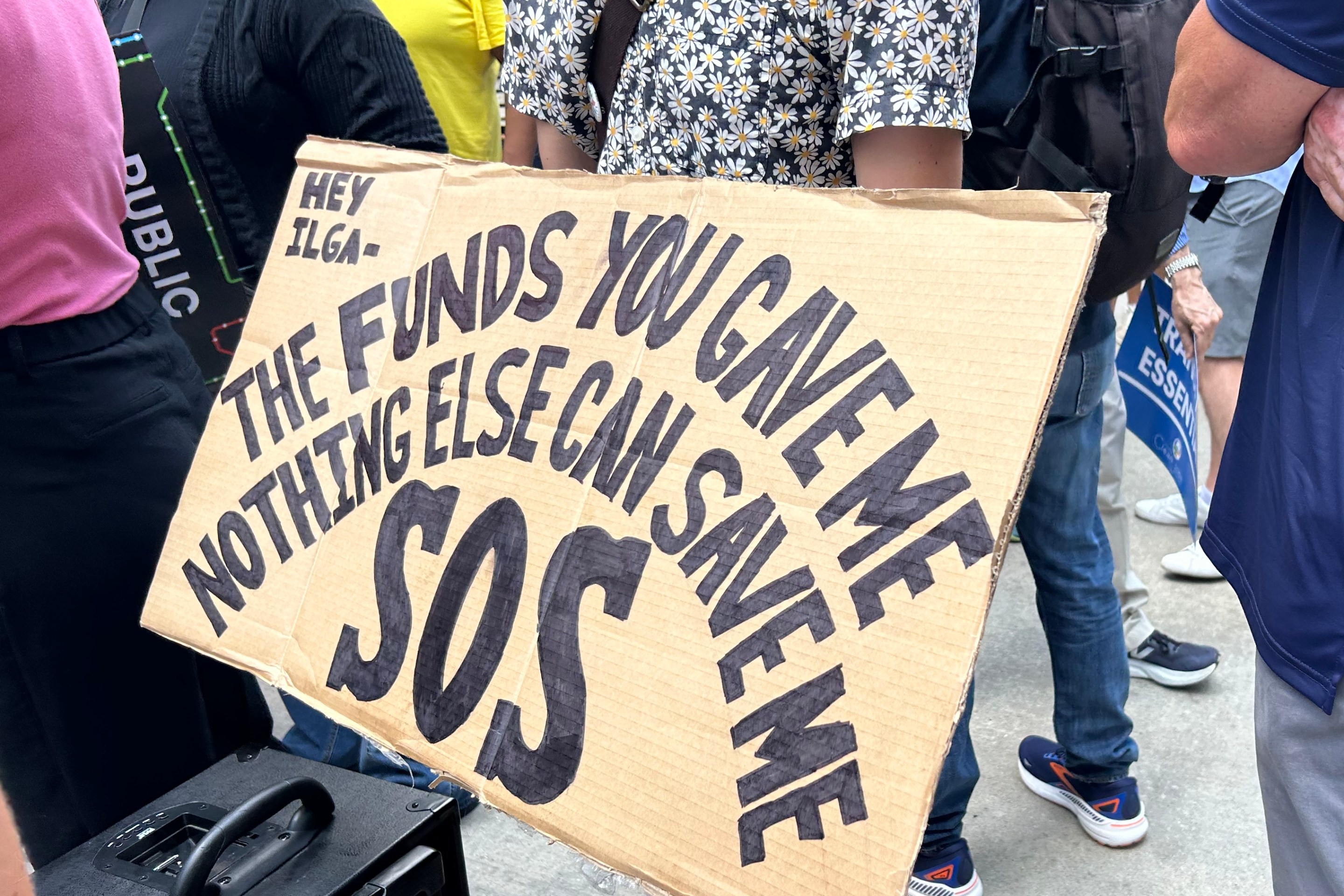Imagine if almost everybody who rode the Chicago Transit Authority, a public transportation system subsidized with taxpayer money, was Caucasian. Denver found itself in an analogous situation last year, when a survey revealed that, in a city where almost half of residents are people of color, 89.9 percent the people using the publicly funded Denver B-cycle system were non-Hispanic whites.
“Our demographic profile is nothing to be proud of, and we know that,” acknowledged Parry Burnap, director of Denver's bike-share program. “We are mostly male, mostly white, mostly wealthy, mostly well educated.” That year a study found Washington, D.C.’s Capital Bikeshare is largely being used by a similarly narrow demographic of District residents.
Chicago Department of Transportation Deputy Commissioner Scott Kubly helped launch Capital Bikeshare along with CDOT Commissioner Gabe Klein, and Kubly is helping to manage Chicago’s upcoming Divvy system. At a community input meeting for the bike-share program last November in Bronzeville, he promised attendees he’d work hard to create a system that is accessible to Chicagoans of all backgrounds and income levels. “Since we’re using public dollars, it’s important that the folks who are using the service reflect everybody in the community,” he said. “It’s a challenge but we’re going to crack it.”
There are a number of reasons why bike-share use might potentially be low in poor neighborhoods and/or communities of color. Nationally, cycling is more prevalent among non-Hispanic whites, according to a recent League of American Bicyclists report, although the study also found the fastest growth in bicycling over the last decade is among Latinos, African Americans and Asian Americans. Although the annual fee for Divvy is only $75, less than a monthly CTA pass, a credit card is required, which is a barrier for unbanked individuals.
Bike-share works best in densely populated areas with many destinations like retail and job centers, but low-income communities are often isolated by physical barriers like expressways and industrial zones, and density is often lower due to economic disinvestment. This is the case in many poor neighborhoods on our city’s South and West sides. “Growing bike share will be easy in some parts of Chicago,” Kubly said last fall. “I’m really focused on building membership in parts of town where it will be hardest.”
The city released a map of planned docking station sites in May. While the coverage area is split fairly evenly between the North and South sides, most of the stations are located within three miles of the lakefront, and station density is higher on the more affluent North Side. University of Chicago grad student Moacir P. de Sá Pereira, a fan of Paris’ Vélib' system, argued on his blog that, in their quest for density, the Divvy planners disproportionately favored wealthier parts of the city and overlooked poor neighborhoods.
Divvy docking station locations; stations will be installed in phases through 2014; 380 are shown, but there will be 400. View in a larger map.
Last week I asked Kubly for an update on CDOT’s efforts to ensure Divvy will benefit all Chicagoans, including those who live outside the planned coverage area. “We absolutely want to serve as many areas of the city as we can,” Kubly said. “But with this initial investment [$22 million in federal and local funds] it may be hard to reach as many areas as we’d like.” He noted that all transportation systems, including the ‘L’, focus on areas with the highest population density. “But we’re also shooting for equity – that’s why we’re going from 6300 North to 6300 South.”
While poor neighborhoods on the West Side will generally not be getting docking stations in the near future, a number of low-income South Side neighborhoods are getting them, including Little Village, Pilsen, Douglas, Bronzeville, Grand Boulevard, Washington Park and Woodlawn. However, while many parts of the North Side will have stations spaced every quarter-mile or so, on the South Side spacing is generally every half-mile.
“Even in areas where we will have less station density, they’re still as dense or denser than any other American bike-share city, except maybe New York,” Kubly said, noting that half-mile distribution means you’re never more than a ten-minute walk from a station. He added that barriers such as the South Branch of the Chicago River, the Dan Ryan and Stevenson expressways, railroad tracks and industrial areas made it harder to incorporate some South Side neighborhoods.
Kubly said in the future CDOT may be awarded additional funding to expand to communities that aren’t getting bike-share this round, and they hope to double the system in size from 4,000 to 8,000 bikes. The department has applied for a $3 million federal Congestion Mitigation and Air Quality Improvement grant that, along with a $750,000 local match, would bankroll 65-70 new stations. The local money could potentially come from Tax Increment Financing dollars, aldermanic “menu” money, and/or corporate sponsorship. “Once we’ve launched a successful system it will be easier to attract sponsorship,” he said.
CDOT is also working on providing Divvy access for unbanked Chicagoans. “This is one area where I think we can really break ground,” Kubly said. In D.C. this issue was addressed via the Bank on D.C. initiative, in which low-income residents received a free Capital Bikeshare membership after completing a financial literacy course, but bike-share participation was relatively low. Other cities like New York are offering discounted bike-share memberships to public housing residents.
“Bank on D.C. was a good first step, but bike-share was an add-on to a financial literacy program,” Kubly said. “Instead of doing that or reaching out through the public housing department, we’ll be doing more of a grassroots partnership with community groups and churches.” CDOT is currently in talks with neighborhood organizations about providing them with group discounts on memberships for their clients or parishioners, similar to a corporate account. The city would share the liability for lost or stolen bikes with the church or community group.
Meanwhile, Kubly says CDOT is spreading the word about the benefits of bike share in low-income neighborhoods. They’ve asked aldermen to help with outreach, including distributing 24-hour passes so that their constituents can try the system for free. Kubly said 3rd Ward Alderman Pat Dowell, who checked out bike facilities in Denmark last year as part of a fact-finding trip sponsored by the advocacy group Bikes Belong, is particularly enthusiastic about promoting Divvy in her Near South district.
The Divvy outreach tent, offering info about the system, sample bikes and the opportunity to sign up for a membership, is appearing at community events like a health and wellness fair this Saturday at the Chicago Urban League, 4510 South Michigan. There will be ads for the system in bus shelters around the city. Participants in the Go Bronzeville transportation demand management program, launching later this year, will get information about how to use Divvy as part of their training on options for getting around the city without a car.
Kubly says another way bike-share is benefitting low-income Chicagoans is through employment opportunities for adults and apprenticeships for teens. CDOT committed to hiring ten percent of the Divvy workforce through Skills for Chicagoland's Future, a job-training program for unemployed individuals, and wound up hiring about twenty percent of its crew, around 20 people, through the program. Some of the employees on the Divvy launch staff are also graduates of the city’s Greencorps Chicago program, which trains ex-offenders and people recovering from substance abuse in environmentally oriented fields like landscaping and urban agriculture.
The Divvy contract with Alta Bike Share includes a requirement for a youth internship program, which is being launched through Greencorps. About 600 young people, ages 16 and up, selected by schools and social-service organizations in violence-prone neighborhoods, will receive six weeks of training in urban agriculture and bike safety and repair at 16-18 schools. After completing the program, it’s likely that 10- 20 of the graduates will get part-time permanent work with Divvy, doing bike repair and distribution, and station maintenance, Kubly said.
“There’s a whole economic development element to the bike-share program,” he said. “We’re saving people money on transportation and hiring local residents.” In the near future, Streetsblog Chicago will provide reactions to Kubly’s comments from community leaders and cycling advocates on the South and West sides.








